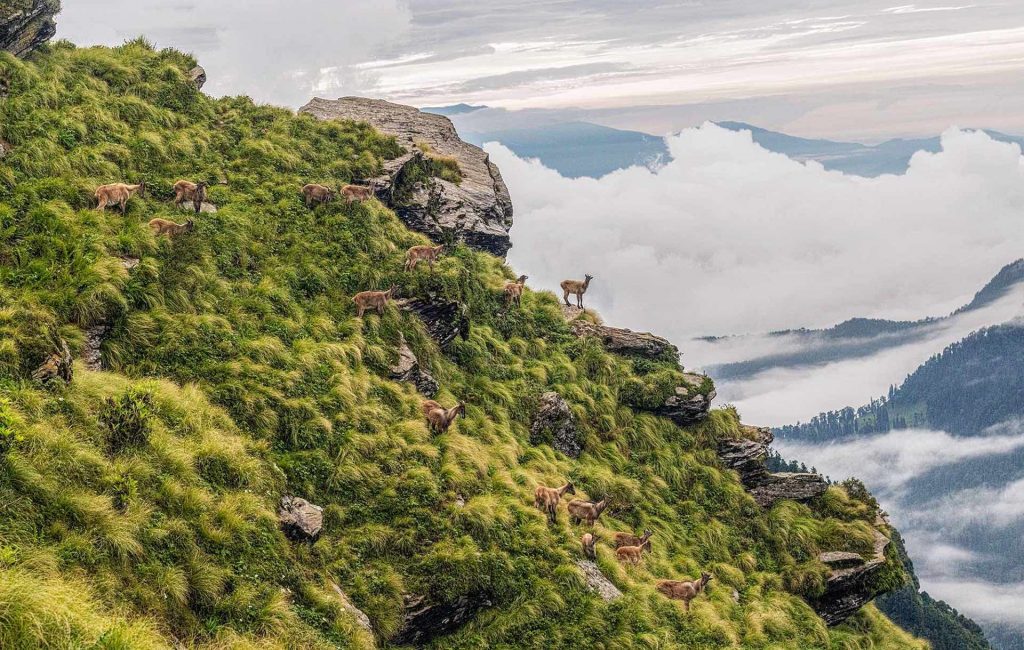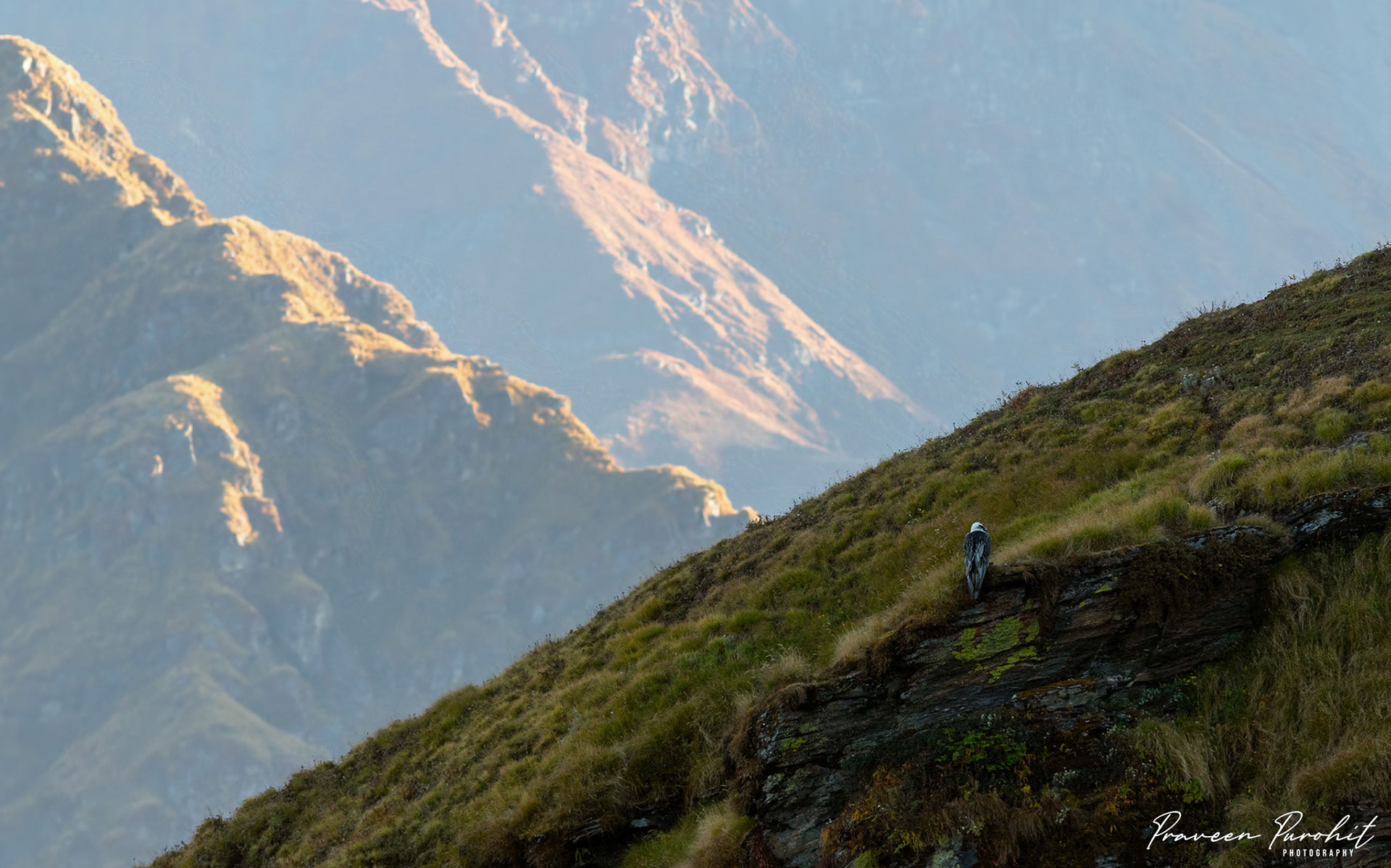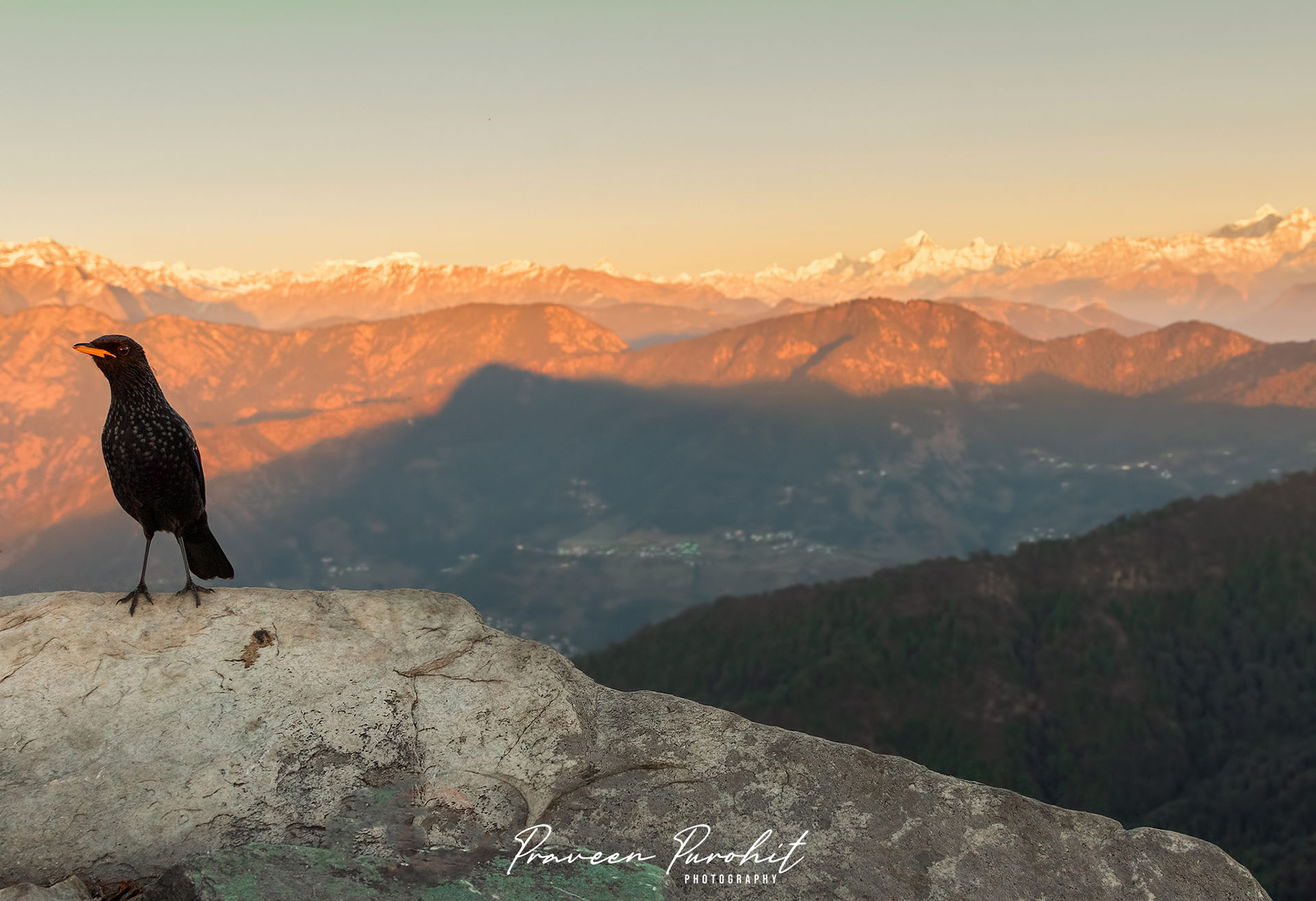Over the years, I have been extremely privileged to spend months with these majestic and shy creatures. They have allowed me to be close to them for hours at end and rewarded me with the most beautiful and intimate images. No amount of words or videos can even come close to describing the delicate moments I have experienced with them.
So when this image received a special mention in the coveted “NBP Aisa” awards last year, it was a moment of joy for me. You see this is my favorite image of Himalayan Tahrs which I have made to date.
The story behind this image is an experience of its own, and today I would like to share the same with you. This image, as can be seen from the green alpine grass and the clouds behind, was shot in monsoons, in the last week of June. This year rain was a bit early and I was in Tungnath, intending to capture some Monals and Tahrs.
The Plan
The intention of this trip was very clear, to make habitat shots of Himalayan Tahrs if possible. A task, which seeing how vast the bugyals are, seemed almost impossible. But I really had wanted to do this for some time now, so here I was. For the first 4 days, although I encountered these Tahrs multiple times, and spent quite a lot of time with them, I failed miserably in making any habitat shots. It was only on my last morning here, that I was presented with an opportunity to make a shot of my liking.
This morning, I decided to explore a ridge running east to west on a small outcrop of a mountain. This outcrop was actually quite big, some 200 meters high, and had a steep inclination of around 60 degrees, with no way to climb it. But I knew, that once I reach the ridge, it would offer stunning views of valleys behind it, and if I was lucky, I could find some Monals and Tahrs too.
So at dawn, I started climbing this outcrop, using the alpine grass as the only support. I was panting up the slopes and was some 200 feet or so from the ridge when I saw this group of Himalayan Tahrs (Juveniles and Females) grazing. Approaching them quietly, I came to within 30 feet or so, when in trying to shoot I scared them away. The moment they saw me at such close distance, they scampered beyond the ridge and I lost a shot.
The Approach
Now, I want you to imagine a ridge roughly 4 to 5 feet in width, running for a couple of hundred meters. This ridge runs west to east. When I first saw these Tahrs, I was facing east and they and I were on the left side of the ridge. The moment they saw me, they scampered to the right side of the ridge, which was beyond my sight.
But from experience, I knew that the females of Tahrs are not so shy and it is quite possible that they might be very merrily grazing on the other side of the ridge. It is then, that I had this idea of switching my lens. I thought that if they are indeed on the other side, I could probably make a habitat shot, which I was looking for days.

So, I switched from 400 to 50mm and very slowly, crawling on the ground, covered the remaining 50 feet or so to the top of the ridge. Beyond the ridge were a gradual drop and the mountain extended to another ridge, the one seen in the image. Between these two ridges was a gradual slope and it was here that they were contently grazing.
The moment I peeked beyond the ridge, one of the Tahrs saw me and gave an alarm call of a whistle. The moment the whistle was sounded, in less than 3 to 4 seconds, all of them disappeared to the valley below. But that time was enough for me to judge the composition and fire off some quick shots.
It was only in this shot, that you can see a Tahr standing atop a rock on the ridge, and for me, this is what makes the shot stand out. Although you can see the other Tahrs too, they are sort of lost in the Bugyals, and had it not for that lone Tahr, this shot would have been quite an average one.
Do check out my other Wildlife and Landscape Photography articles here.



